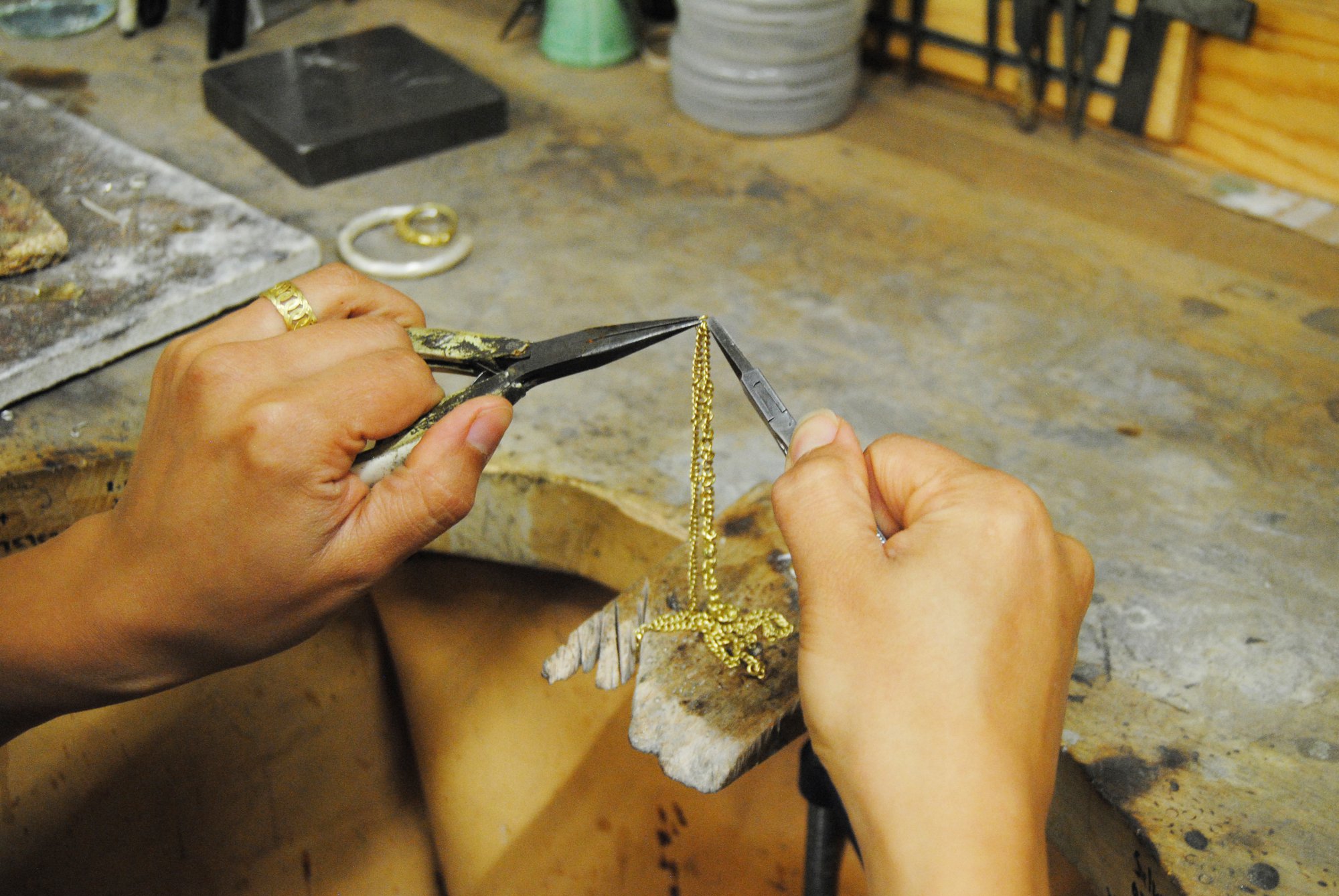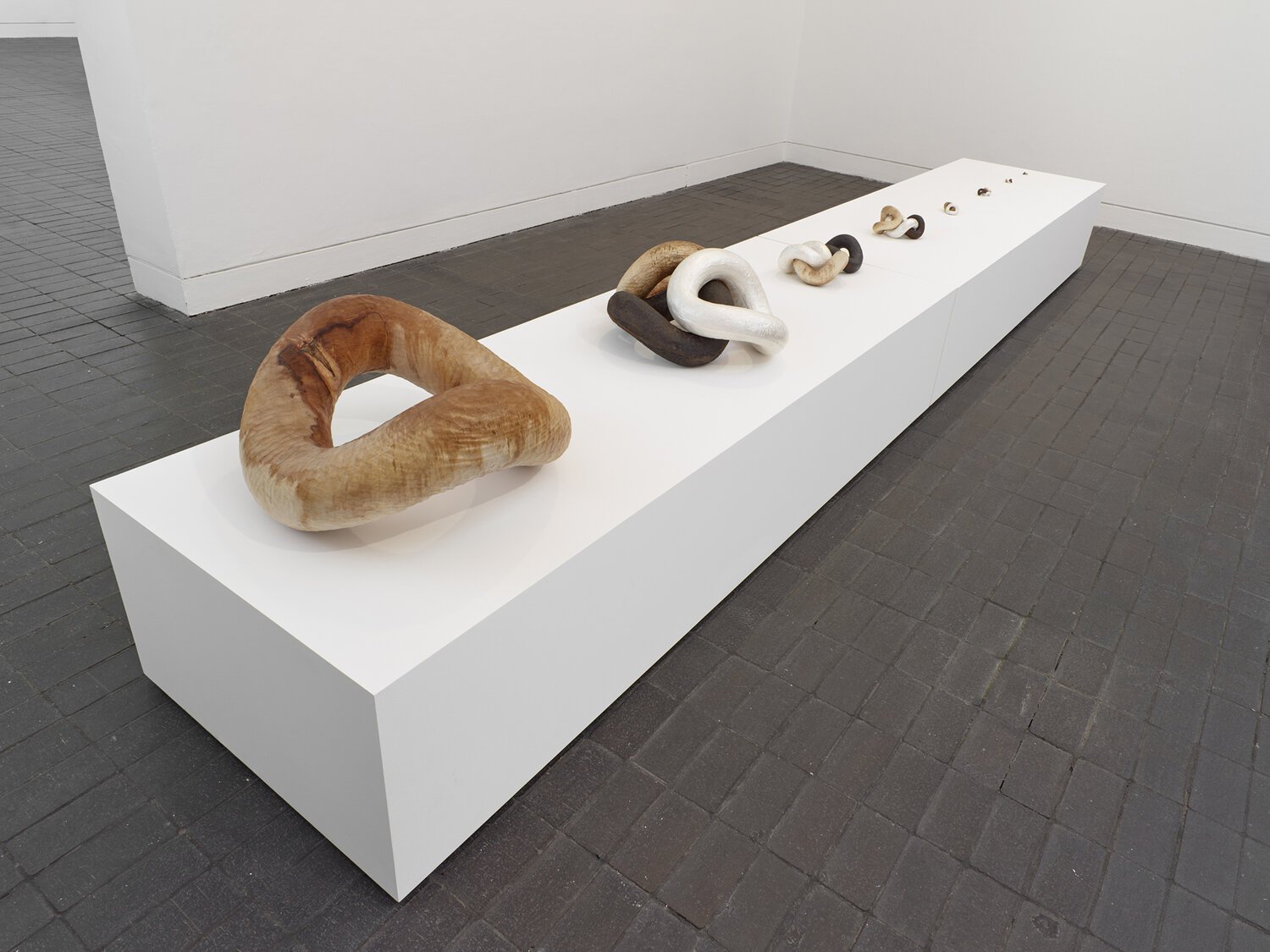A woman’s identity in jewellery and art: Part three
In this three-part series for International Women's Day, Jeweller Ella Fearon-Low spoke with three inspirational women using the intersection between jewellery and art as a way to access female creative identity. This is part three, featuring artist-jeweller Lucie-Gledhill.
Of my choice of three, Lucie is the one I know the least. She is known for her beautiful, understated but technically accomplished chain making which she forms into beautiful contemporary jewellery. I admire the way her practice has evolved through the purposeful exploration of material and science into art. Her ongoing partnership with photographer Kasia Wozniak sees her dissolving silver from her gold chain making in nitric acid and recycling it into photographic imagery; her participation in Jerwood Makers Open (a major award for five early-career UK-based artists) saw her take her love of chain and scale it up into enormous links in wood, silver and iron; and her recent career catalyst grant from the Goldsmiths’ Centre sees her exploring wire-drawing techniques with master goldsmith and artist Giovanni Corvaja.
After some technical challenges, we’re connected. There’s so much to explore and I’m curious to know how she sees herself. “I’m a chain maker first,” she says after some thought. I love the simplicity of the definition but also how it belies the complexity of what she does, and the amount of skill and training needed to make it possible. She trained at Middlesex of which she says was a very “conceptual course exploring the boundaries of jewellery and the relationship between the body and jewellery.” I can understand how this has informed her practice – a chain must behave in almost perfect synchronicity with the body’s movements.

Lucie in her studio.
I enquire as to where this fascination with chains originates: “I was going through my parents’ old jewellery box – they used to keep an old ice cream tub under the stairs and I’d sometimes get it out and take a look. One of the pieces in there was my great grandfather's fob chain – the way it graduates, from big to small, as a piece intrigued me. But what I really love is the meditative repetition of chain making; the way you can add flexibility to a material with endless repeating structure.”
"We’re all on a journey all the time; learning and making go hand in hand."
I want to explore this idea further because as a person, she never seems content with sitting still – she’s always on a quest. “I was talking to my friend the other day,” she remembers, “and I just happened to ask him, 'How would you describe me?' And he said, 'Inquisitive. Very inquisitive.' I think that's just my nature really.” It’s not just the quality of a good artist, but also a kind of natural philosopher, asking how and why – it’s an amazing trait. We should all make more time to explore the things that get us curious about the world. I feel I should stop and ask “what would Lucie do?” every once in a while.

Lucie working on a piece in her studio.
Speaking of natural philosophy, I mention that I watched her interview with Giovanni Corvaja (with who she is currently looking at how silver can be a supporting material for gold whilst drawing very fine wire), which was almost alchemical in nature. I experienced a child-like wonder as she demonstrated the process of working with silver and nitric acid. There are many technical aspects to her work and I want to know what she has found most challenging. “I'd probably say the Jerwood project just because I was pushing myself in many different directions in terms of scale, in new materials, and different ways of working so, that was a massive technical thing for me. I'm always learning and that's the thing that interests me the most. For example, I recently made eighteen carat white gold which I've never done before, with palladium. So I learned something the other day. It's always driven by the new technical experiences.”
I agree that we’re all on a journey all the time; learning and making go hand in hand. I recall a jeweller I know in east London, also known for chain work, who said to me “there’s something about Lucie’s chain making – I just don’t know how she does it.” She is both the source and object of an ever-present push for creative knowledge.
With this, she puts forward Caroline Broadhead as a woman she particularly admires. “I love her work so much,” she says, “there’s a quiet poetry to it and you can see the thinking, the development and the experimentation that has developed over the years. She’s fearless and can turn her hand to any material and it’s instantly got her signature on it.” I couldn’t agree more and quietly wonder if people will still see my signature on the work that I’ve made, in years to come.

Lucie Gledhill, 'Chain' from Jerwood Makers Open, 2019.
But it’s obvious now isn’t it? Looking back over the three conversations. Using jewellery and art as a way to approach being a woman in the business of making highlighted so many interesting aspects of creativity – but most of all it’s something more general that shines through. There’s a conviction of purpose coupled with a comfortable sense of one’s own identity that resonates throughout. This is what inspirational people do – they help you see the things that are right in front of you and call out the necessary moral parts you need to keep going.
I say goodbye to Lucie and promise to speak to her soon. As I close my laptop, I remember something Zoe said: “if you decided that's what you wanted it to be, that's enough.”
I have thoroughly enjoyed my time in conversation with these three inspirational jewellers and my brain is whirring with the unmade projects in my studio. I am going to try and channel a bit of all of them in my work and be more brave! I hope there will be more spaces for art jewellery in a post-Covid world, and I look forward to being part of the conversation. Happy International Women’s Day.